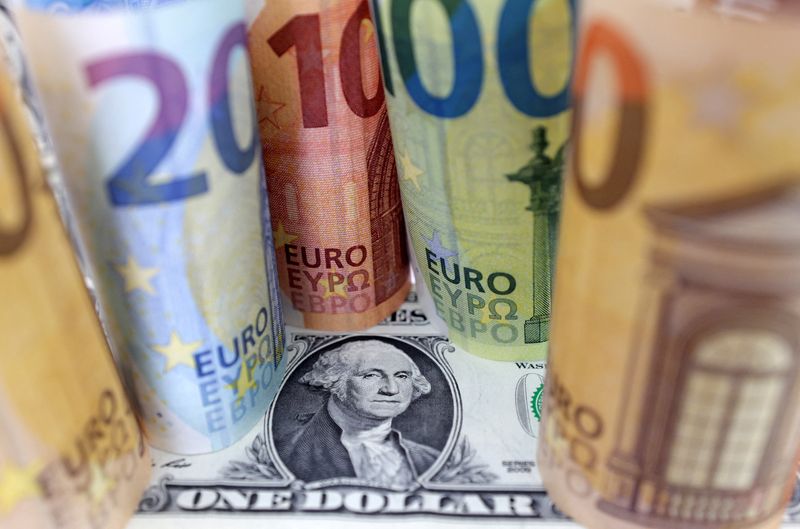By John McCrank
NEW YORK (Reuters) -The dollar edged higher against the euro on Friday after producer inflation data for November came in slightly hotter than expected, casting doubts on whether the U.S. Federal Reserve will slow its pace of interest rate hikes when it meets next week.
U.S. producer prices (PPI) rose 0.3% last month, data showed, above the 0.2% forecast by economist polled by Reuters.
While the PPI report showed the underlying trend in inflation is moderating, it heightened concerns among market participants that next week's consumer price inflation report, which comes out just before the Fed decision, could also surprise to the upside.
"It was a stronger read on prices, to be sure, that will leave the market cautious on a similar outcome next week when we see the consumer price update," said Ian Lyngen, head of U.S. rates strategy at BMO Capital Markets.
The U.S. central bank is in the midst of the fastest interest rate-hiking cycle since the 1980s as it tries to thwart decades-high inflation, and Chair Jerome Powell said last month that the Fed could scale back the pace of its rate hikes "as soon as December."
The dollar was broadly weaker overnight, but reversed some of its losses after the PPI report.
The greenback was up 0.13% against the euro at $1.05405 at 9:38 a.m. EST (1438 GMT), though the common currency was still on track for a third straight week of gains.
Sterling edged up 0.27% to $1.2274, not far off Monday's six-month high of $1.2345, as the government announced reforms designed to maintain London as one of the most competitive financial hubs in the world.
The European Central Bank and the Bank of England will also announce interest rate decisions next week and markets are betting that they, along with the Fed, will slow the pace of their rate hikes, with 0.5 percentage point increases across the board.
Volatility levels for major currencies have retreated towards their long-run average, currency analysts at MUFG said in a note, as markets start to price in the prospect of peak interest rates early next year.
"Part of the decline in volatility we would put down to market pricing indicating most central banks are approaching terminal rates, suggesting Q1 will be the quarter when most central banks will pause after roughly 12 months of tightening," the note said.

The Japanese yen jumped as much as 0.7% versus the greenback, but gave up some gains following the U.S. PPI data, and was last up 0.38% at 136.165 yen.
The dollar index - which measures the greenback against a basket of six major currencies - remains up about 9.5% for the year so far, but is down more than 6% for the fourth quarter, reflecting lowered expectations for inflation and interest rates.